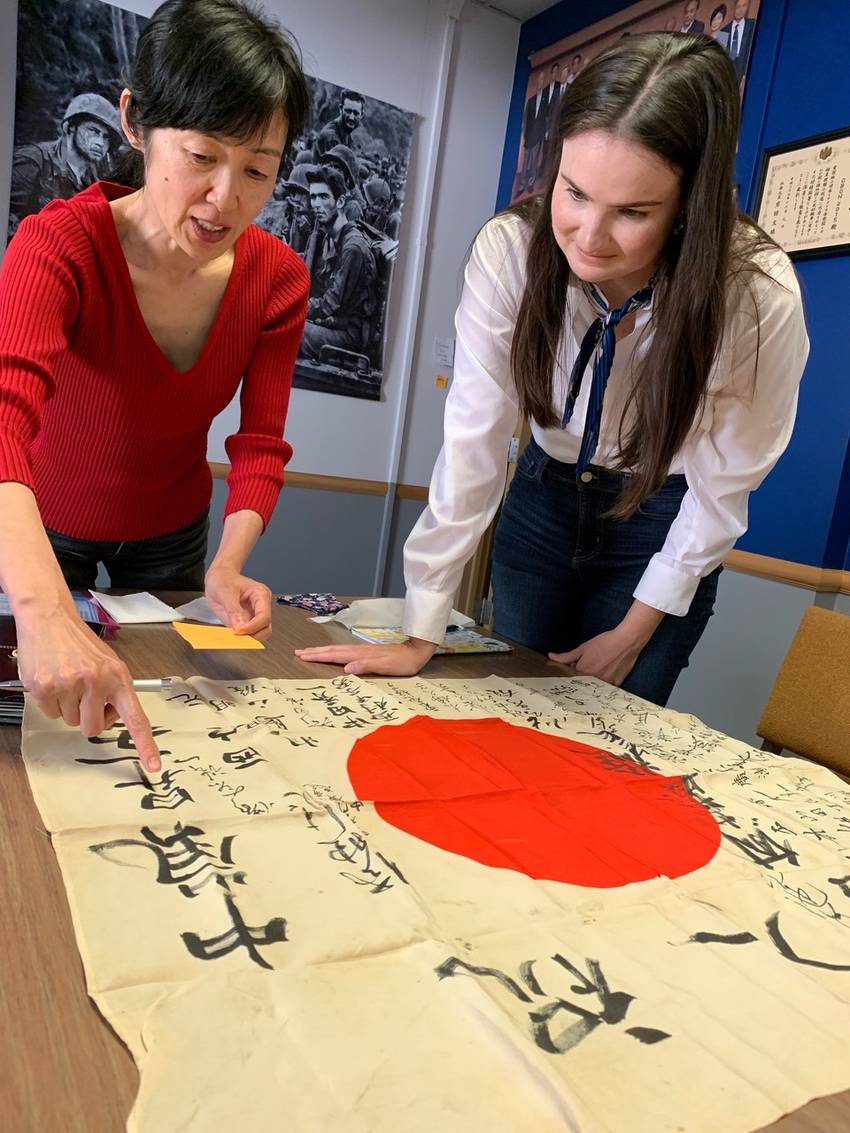
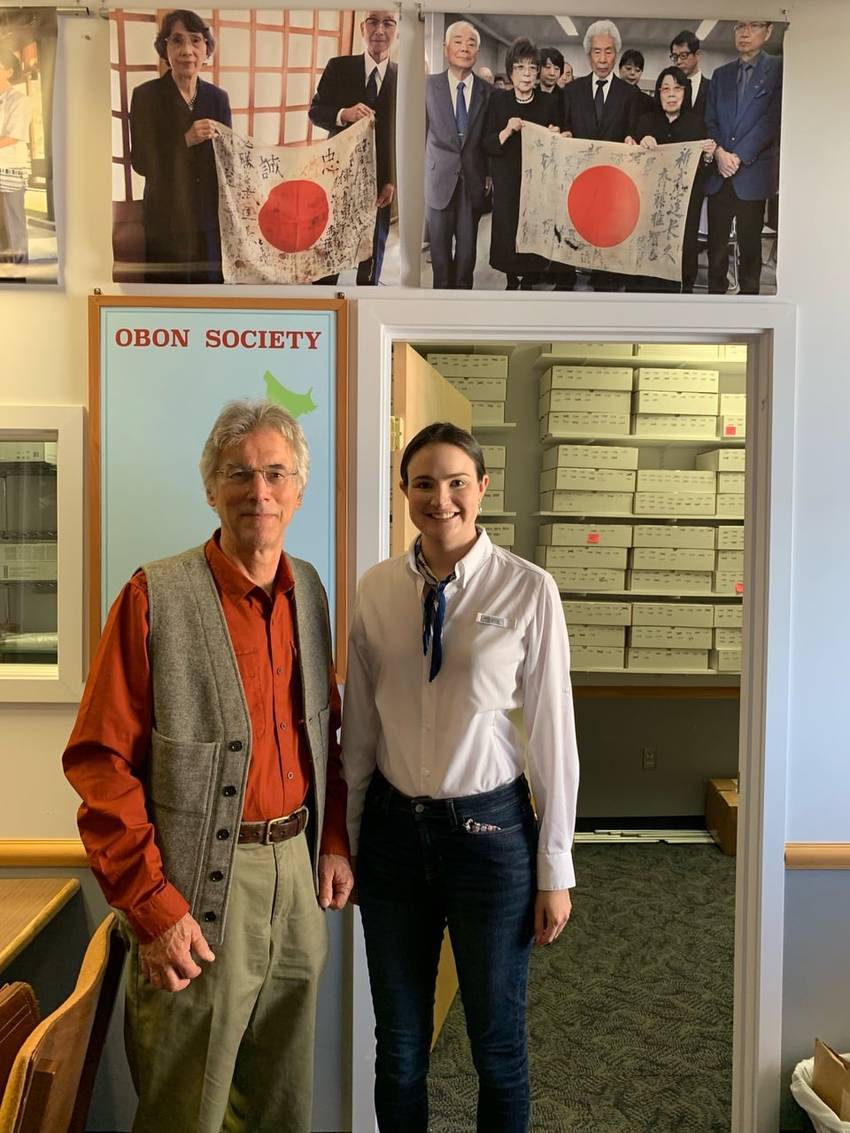
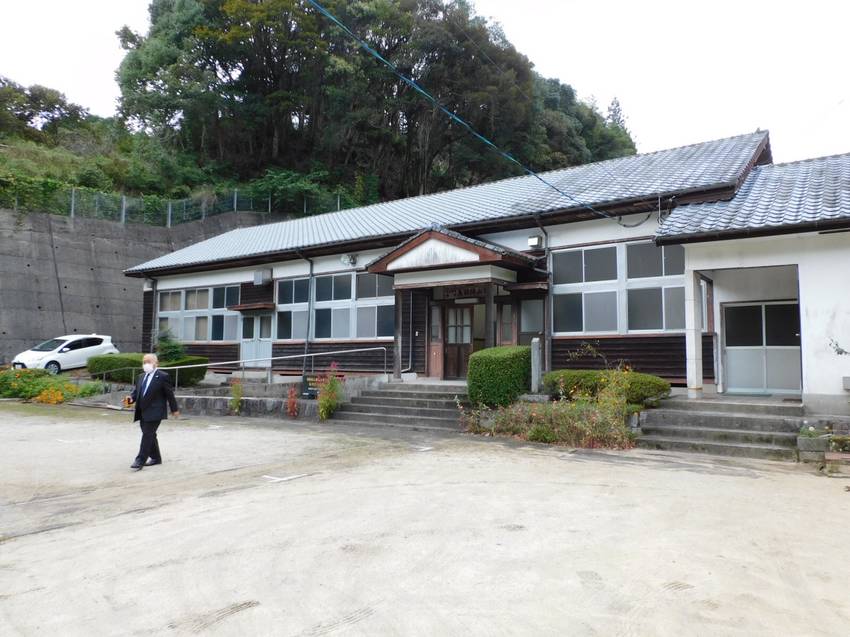
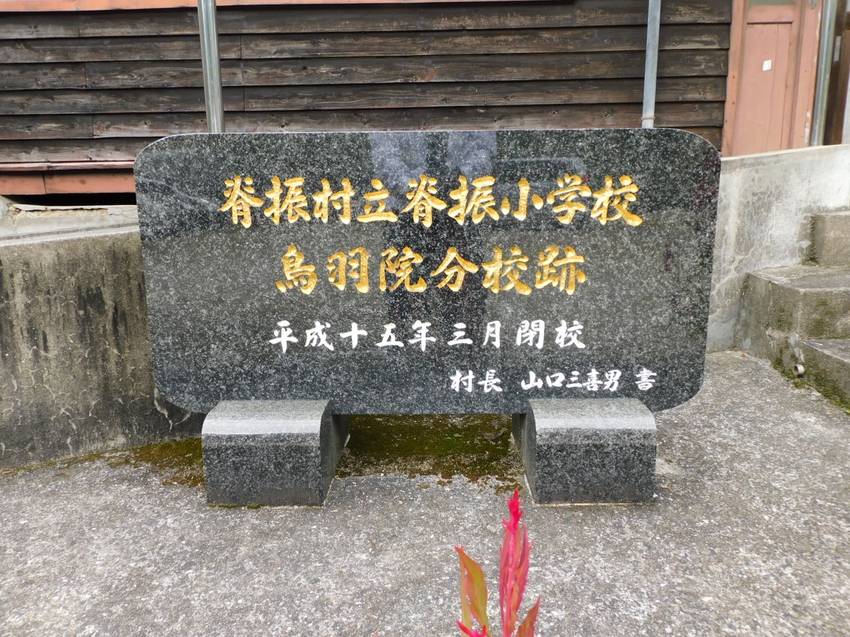
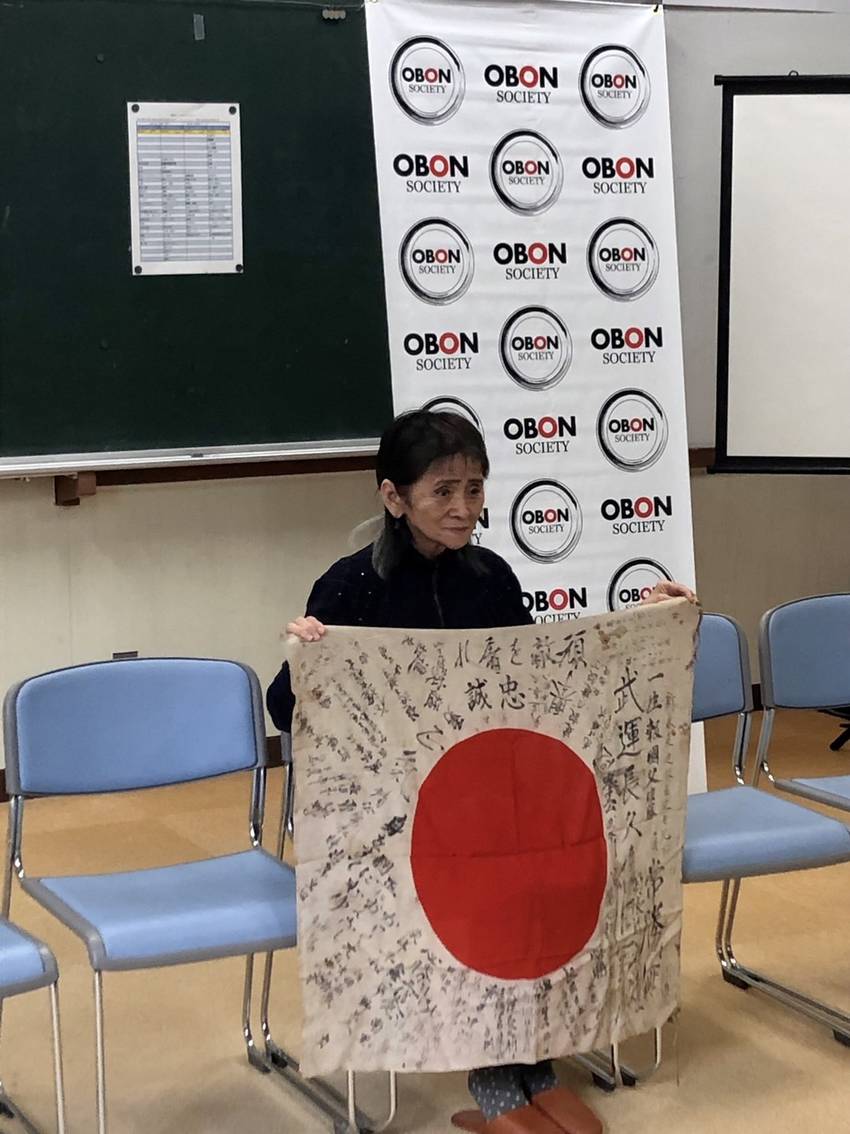
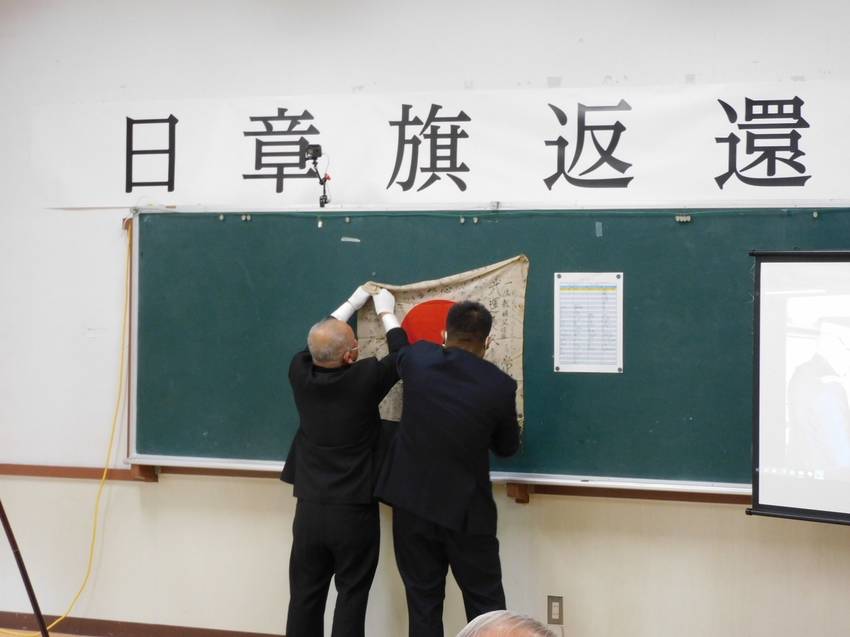
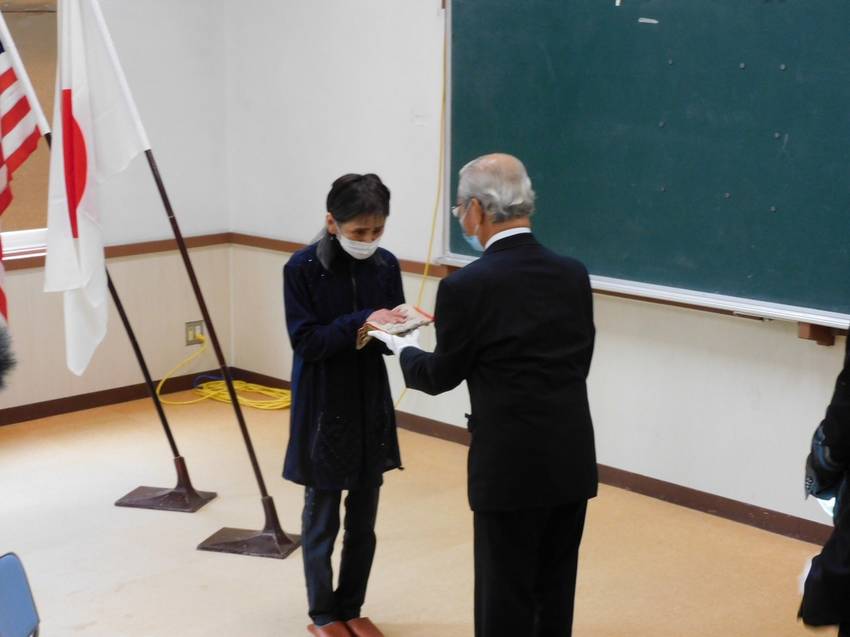
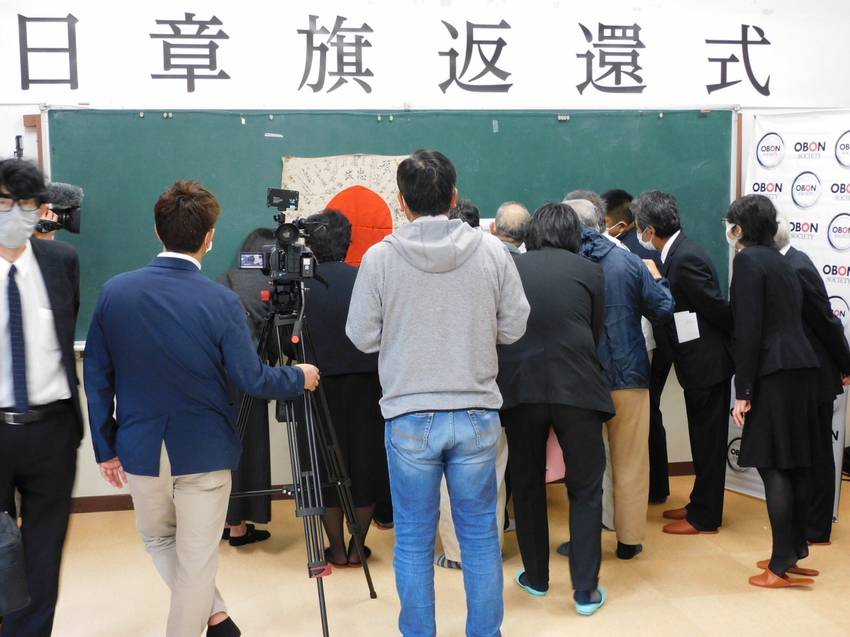
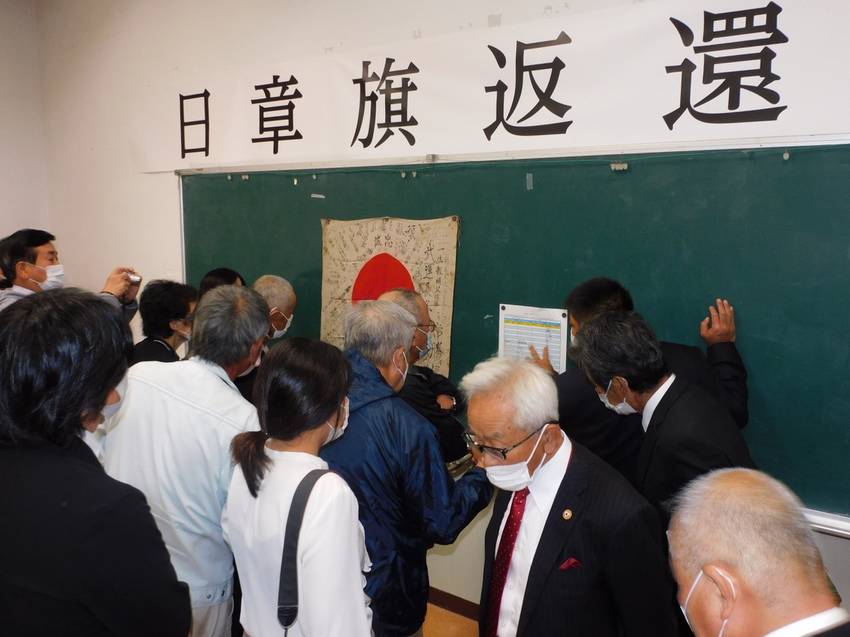
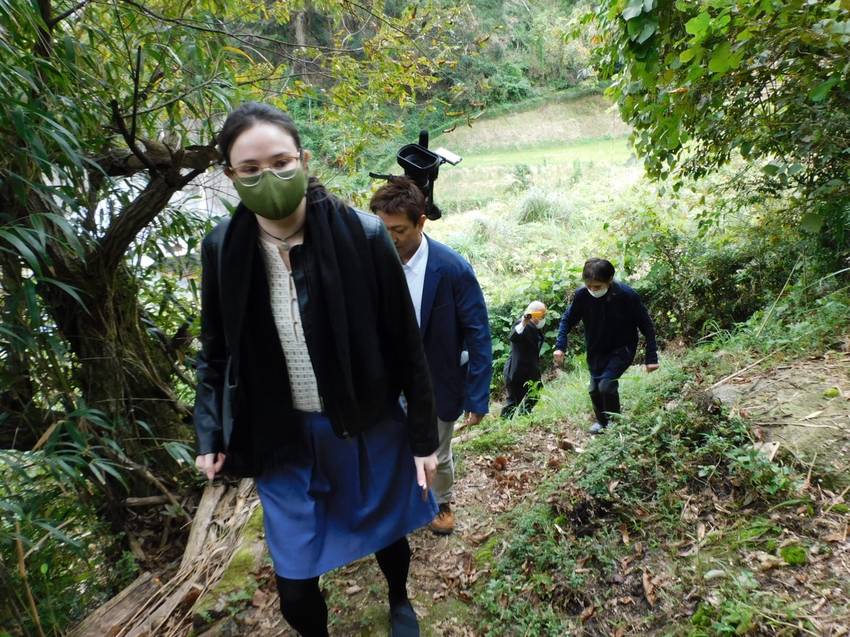
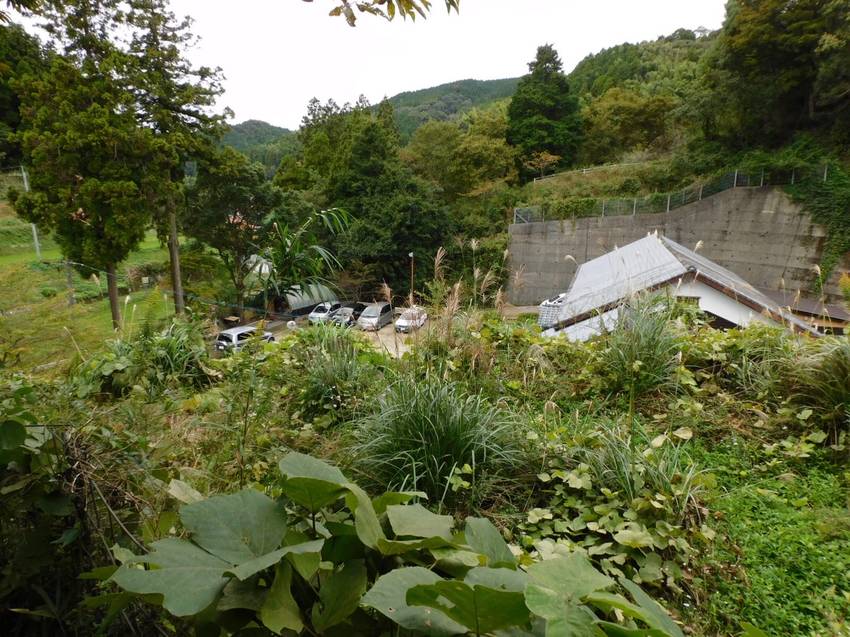
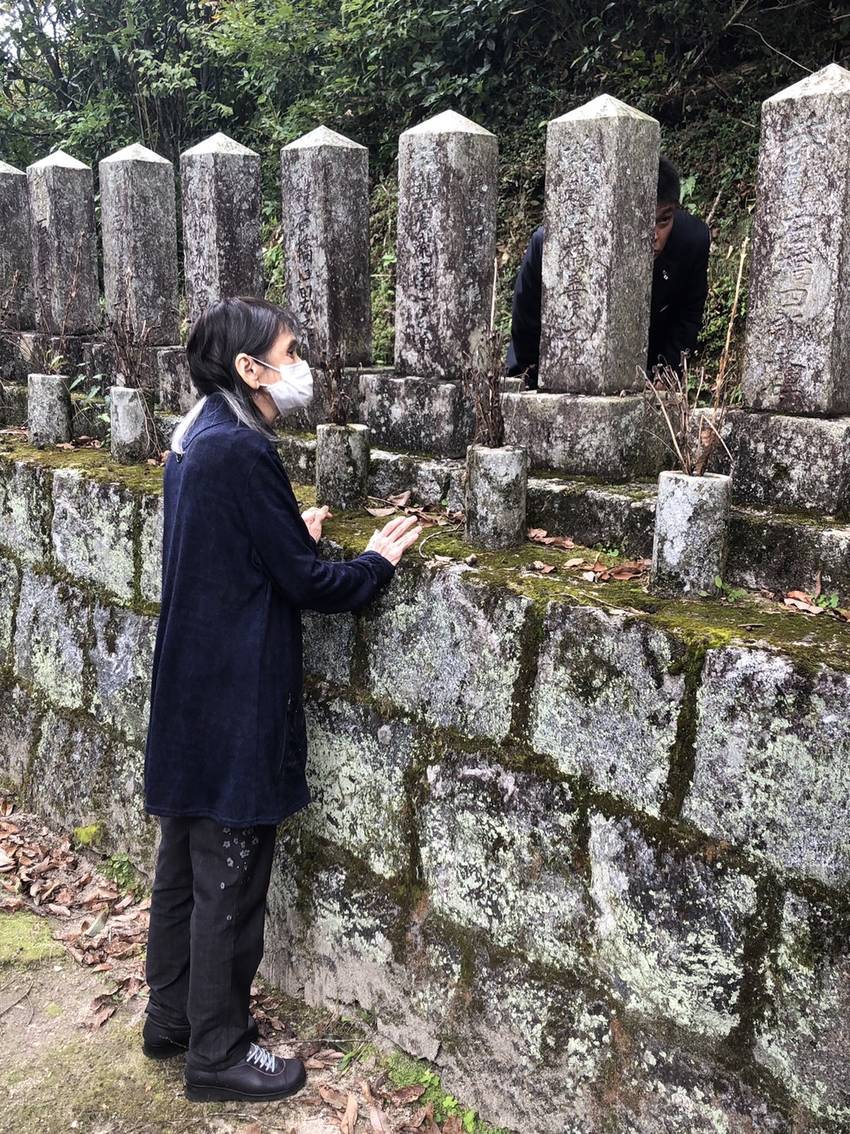
佐藤守男命日章旗返還式雑感 「Alexandra De Leon」
ーアレクサンドラさんは現在、「寄せ書き日の丸」など日本兵の遺品を通じ、日本史の博士号を取得すべく米国から来日している上智大学の客員研究員ですー
原文は英文ですが下部にOBONスタッフが翻訳した日本語があります。
ーーーーーーーーーー
ーSaga Flag Return CeremonyーAlexandra De Leon
This past Tuesday, October 11, 2002, I had the honor of attending a ceremony to return a yosegaki hinomaru to the family of a Japanese soldier in the small town of Sefuri-machi in Kanzaki City, Saga prefecture.
As a PhD student in Japanese history, I have been studying the return of personal items of Japanese soldiers taken as war trophies during WWII since 2018, but this was my first time attending a return ceremony in person.
Satou Yoshiko received the flag of her brother-in-law who died in WWII, Satou Morio. The ceremony took place at the school he had attended as a boy in Sefuri-machi. She stated that they never received his remains and had no other personal effects of his left, so this is a precious last relic.
This ceremony was unique because it marked the first time that a war souvenir was returned to Japan from an American military institution, the New Mexico Military Museum. During WWII, the 200th Coast Artillery, based out of New Mexico, became a part of the Bataan Death March, and the legacy of that experience still lingers in the local community.
It is especially powerful that this community and the New Mexico National Guard decided to repatriate the flag. To me, this return is not only a gesture of peace and friendship between the US and Japan, but an act of empathy - a choice to see Japanese soldiers and their families as not fundamentally different from American ones, but the same. A choice to recognize their shared desires to mourn and honor their deceased loved ones.
In a video message played at the ceremony, Margaret Garcia, the daughter of a Bataan Death March survivor who was instrumental in returning the flag, stated that the flag is being returned not just to a person, but from one community to another.
After the ceremony, I saw community members gather to look at the flag and read the messages, which had been transcribed into modern Japanese. Some recognized the names on the flag as neighbors or family members. I could feel the connection between the local community and the deep history of the flag, and I felt that Margaret Garcia’s words were correct.
What it means to honor the dead, especially those who died in battle, is a question that can be fraught with political, cultural, and emotional tension. But acts of empathy, like returning this yosegaki hinomaru, have a way of connecting people across generations and cultures, to remind us of not only our shared grief and loss, but also our shared humanity.
ーーー日本語訳---
佐賀での日章旗返還式「アレクサンドラ ディ リヨン」
去る2022年10月11日(火)、私は佐賀県神埼市の脊振町という小さな町で、日本兵の遺族に寄せ書きの日の丸を返還する式典に出席する栄誉を得ました。
日本史の博士課程に在籍する私は、2018年から、第二次世界大戦中に戦利品として取得された日本兵の遺品の返還について研究しています。実際に返還式に参加するのはこれが初めてでした。
佐藤淑子さんは、第二次世界大戦で戦死した義兄、佐藤守男命の旗を受け取られました。式典は、彼が少年時代に通っていた脊振町の小学校で行われました。遺骨は還らず、遺品も無いので、この日章旗は貴重な遺品になったそうです。
この式典は、ニューメキシコ軍事博物館というアメリカの軍事施設から、戦利品である遺品が初めて日本に返還された、特別なものでした。第二次世界大戦中、ニューメキシコ州を拠点とする第200沿岸砲兵隊はバターン死の行進の一員となり、その体験は今でも地元に遺恨を残しています。この地域社会とニューメキシコ州兵が旗の返還を決定したことは、とても大きな意義があります。
私にとって、この返還は、日米間の平和と友好の証であるということだけでなく、アメリカ兵が日本兵とその家族を根本的に異なる対象として見るのではなく、同じ人間同士として見るという思いやりの行為であり、亡くなった方々を悼み、称えようという共通の願いがあることを認識するものだと思います。
式典で流れたビデオメッセージの中で、バターン死の行進の生還者の娘であり、旗の返還に尽力したマーガレット・ガルシアさんは、旗は単に個人に返還されるというのではなく、一つのコミュニティから他のコミュニティへ返還されるのだと述べています。
式典の後、地域の人々が集まって旗を眺め、現代日本語に書き直されたメッセージを読んでいるのを見ました。中には、旗に書かれている名前を近所の人や家族だと認識している人もいました。地域社会と旗の深いつながりを感じ、マーガレット・ガルシアさんの言葉は正しいと思いました。
亡くなられた方、特に戦死者を称えることは、政治的、文化的、そして感情的な緊張を伴う問題にも成り得る。しかし、この寄せ書き日の丸を返すという思いやりの行為は、世代や文化を超えて人々をつなぎ、悲しみや喪失感を共有するだけでなく、人間らしさを共有することも思い出させてくれるものなのです。